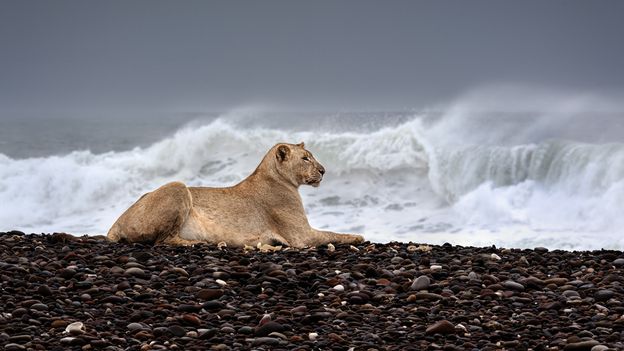These animals have adapted to live in “the most inhospitable terrain you can imagine, a huge sea of sand dunes, with no vegetation”, says Stander, who founded the non-profit Desert Lion Conservation Trust in 1997.
“The desert lions are incredibly unique,” says Stander. They have the largest home range of any lion, he says, adding: “They are super fit, top athletes.” The average home range of a desert lion is around 12,000 sq km (4,600 sq miles), he says, adding that a lion in the Serengeti would typically have a home range of around 100 sq km (39 sq miles). They have even adapted to survive without water. “They get most of their hydration from the meat they eat,” Stander says.
“We’re so used to seeing lions in a savannah habitat or lying on top of a big rock, like in The Lion King, so it’s really striking to see one on a beach. It just feels very strange and unusual,” says Natalie Cooper, a senior researcher in the life sciences department at the Natural History Museum in London.
The desert lions tend to travel in much smaller groups than savannah lions, says Cooper. “In general, with lions we see that in areas where there’s more prey, they end up with more individuals per pride and also a smaller home range,” she says. “In this area, they [roam] in small groups across massive distances in order to get enough food.”
This makes the task of photographing the lions even more challenging. “As a photographer it is wonderful because these lions are always on the move,” says Van Malderen. “They are not lying around and sleeping, but always hunting to survive.”

